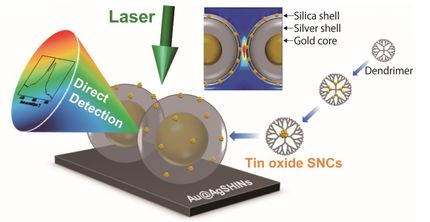Raman’s narrower fingerprint set to broaden utility of flow cytometry
Andor Technology plc announced that researchers have successfully tested the first proof-of-concept of a Raman Spectral Flow Cytometer (SFC), thanks to its Electron Multiplying CCD (EMCCD) camera NewtonEM.
Raman Spectral Flow Cytometry promises to revolutionise cell characterisation by allowing hundreds of variables to be observed simultaneously. It will also make it far easier to distinguish between different cell types given the narrow spectral fingerprint compared to fluorescence. The group hopes this new technique will eventually complement traditional flow cytometry, which can only currently characterise cells using a maximum of 19 parameters, with traditional side scatter and different fluorescent colours techniques.
Researchers from the La Jolla Bioengineering Institute have successfully developed their new design of high-resolution flow cytometer by incorporating a highly-sensitive EMCCD camera from Andor. Previous spectral flow cytometer designs had used single point detectors such as photomultipliers, restricting instantaneous spectral information.
Raman spectra have narrower wavelength bands than fluorescent labels meaning hundreds of separate variables can be measured without overlap between wavelengths. Fluorescent labels attached to cells in traditional flow cytometry emit over a wide range of wavelengths, so there is a limit to the number that can be used.
The Raman signal in the group’s Surface Enhanced Raman Spectroscopy (SERS) technique is boosted by binding metal nanoparticles to the cells. The SERS emissions are measured using Andor’s camera. In time, it is hoped that Raman spectral information could also be used to complement and improve the ability of flow cytometers to sort cells as well as identify different cells.
Other news from the department research and development
These products might interest you
Most read news
More news from our other portals
See the theme worlds for related content
Topic World Spectroscopy
Investigation with spectroscopy gives us unique insights into the composition and structure of materials. From UV-Vis spectroscopy to infrared and Raman spectroscopy to fluorescence and atomic absorption spectroscopy, spectroscopy offers us a wide range of analytical techniques to precisely characterize substances. Immerse yourself in the fascinating world of spectroscopy!

Topic World Spectroscopy
Investigation with spectroscopy gives us unique insights into the composition and structure of materials. From UV-Vis spectroscopy to infrared and Raman spectroscopy to fluorescence and atomic absorption spectroscopy, spectroscopy offers us a wide range of analytical techniques to precisely characterize substances. Immerse yourself in the fascinating world of spectroscopy!
































































